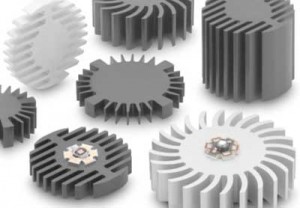In previous sections, we discussed two different cooling materials for LED lamps: porous structured ceramic and conductive plastics. But none of them are available for practical uses. In next section, we are going to introduce the final cooling material, see if it is suitable for LED lamps.
Graphite material: due to its special molecular structure, graphite material has a property of anisotropic heat transmission. Graphite has a layer structure, covalent bond structure within each layer and molecular bond structure between layers. The internal-layer construction is compact, having stronger heat radiation ability, while the inter-layers construction is incompact, the heat transmission speed is much lower than internal-layer.
According to its special internal construction, designers usually cut graphite into sheet structure when used as radiators due to its high heat radiation ability in lateral. However, those transmitted heat will be gathered on the side surfaces. How to radiate this part of heat into air is the key potion. Designers have to increase the area of side surfaces, and meanwhile make sure that the middle transversal surface lower than a threshold to maintain the lateral heat radiation ability. Therefore, designers create an approximate cone structure. Although this conical graphite radiator has a very good heat radiation capability, it is unfeasible in practice since that they need a lot of space. The current used graphite radiators in the LED Street Light market are sheet-shaped. They actually just transmit all the heat from middle to both sides. How to radiate the heat on side surfaces is a big problem. After a series of tests, the cooling capability of graphite plate in amazing, even better than aluminum plate. However, they can only maintain this well behavior in a short term. As time passes, their performance will get worse and worse. After ten hours, the heat radiation capability will drop to 30%. Sales of this kind of radiator are not good. In near future, they will be probably disappeared just like porous structured ceramic and conductive plastics did.
So far, aluminum plates are the most commonly used cooling materials for LED lights. No matter how many other materials were created or are creating, for a quite long time, we believe that aluminum will still be the main material for radiators.

